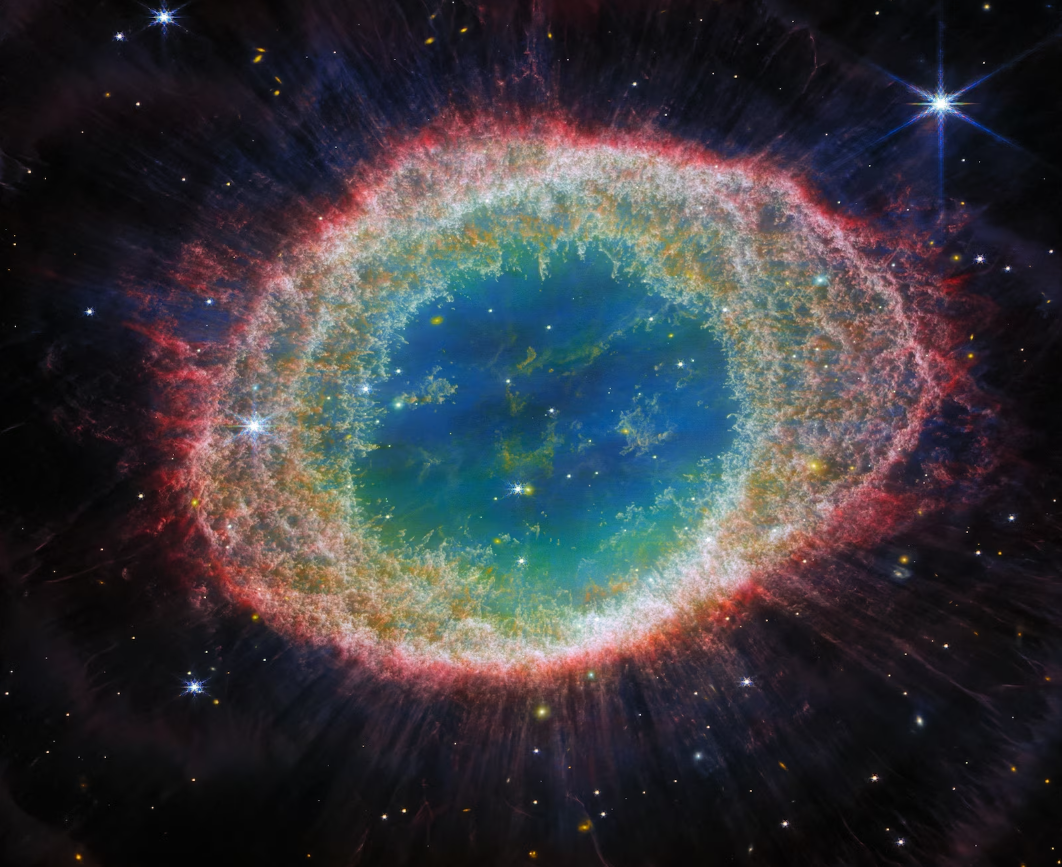
©ESA/Webb/NASA/CSA
Vocabulary:
- unprecedented /uhn-PRES-i-den-tid/
- high-resolution /HAHY-rez-uh-LOO-shuhn/
- formation /fawr-MEY-shuhn/
- fascination /fas-uh-NEY-shuhn/
- capability /key-puh-BIL-i-tee/
[adjective] – never having happened or existed in the past
The discovery of a new species in the jungle was unprecedented because it had never happened before.
[adjective] – used to describe something such as a screen or photograph that shows an image extremely clearly
The high-resolution display on the new smartphone allows you to see every detail in photos and videos.
[noun] – the way something is naturally made or the way it has been arranged
The geologist studied the rock formation to understand how the mountains were created.
[noun] – the fact of finding someone or something fascinating
Her fascination with ancient civilizations led her to become an archaeologist.
[noun] – the ability to do something
The astronaut’s capability to repair the spacecraft in space saved the mission.
Article reading:
The Ring Nebula has been a subject of fascination for astronomers for years, and Webb’s advanced capabilities allow for a deeper exploration. Observing the different colors generated by chemical elements within the nebula helps scientists understand the interactions between the star’s radiation and the elements it releases, offering valuable insights into the star’s life cycle. Additionally, Webb’s images reveal the presence of large carbonaceous molecules within the nebula, posing questions about their origins. The Ring Nebula serves as a unique laboratory for investigating the life stages of stars, enhancing our comprehension of the universe’s intricacies and secrets, and its upcoming mid-infrared images may further elucidate the nebula’s complex structures, providing a deeper understanding of how a single star can give rise to such a multifaceted celestial formation.
Discussion Questions:
- Have you ever been intrigued by celestial objects like the Ring Nebula and followed the discoveries made by space telescopes like Webb? If yes, how do these discoveries influence your understanding of the universe? If not, can you imagine the impact of such discoveries on your perception of space and the cosmos?
- When you hear about the advanced capabilities of the James Webb Space Telescope and its ability to capture high-resolution images, does it spark your interest in space exploration and astronomy? If yes, how do you think these advanced tools can benefit our understanding of the universe? If not, what might pique your curiosity about the mysteries of space?
- Did you find the article about the James Webb Space Telescope and its discovery of the Ring Nebula to be fascinating and informative?
- How do you think the detailed images and insights provided by the James Webb Space Telescope can advance our understanding of the life cycles of stars and the composition of the universe? What specific discoveries or applications can you imagine arising from this technology?
- The article mentions the presence of large carbonaceous molecules within the Ring Nebula, raising questions about their origins. What theories or hypotheses can you come up with regarding the source of these molecules, and why is it important to investigate them in the context of stellar evolution and celestial formations?
Summarization
Describe:
- glimpse
- insight
- interaction
- radiation
- upcoming